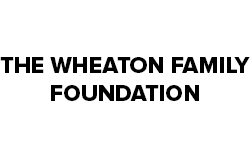Part B: Learning Plan
- Learn how communities work together to support one another
- Think about the impact of their lifestyle choices on the environment
CITIZENSHIP INQUIRY 1
- Illustrate examples of interdependence of communities. (IN3.3)
Students will understand how communities work together to support one another.
- Evaluate the ways in which technologies have impacted daily life. (RW 3.3)
Students will know how they use technology in their daily life.
QUESTIONS TO GUIDE INQUIRY
- Pose the essential and guiding questions and allow students to discuss their thoughts on the matter.
- Determine what the students know, understand, need to be able to do to master/answer the essential questions (connect to content). Additional guiding questions can be added as required. Students are encouraged to add their questions to the others.
- Create Know, Want to know, Learned Chart – identify vocabulary that requires development
- Surface any additional questions students might have as a result of their discussions about the essential questions.
- Post student answers for reflection at end of study.
- How do you control the impact of your actions and decisions?
- How far reaching is the impact of your choices/decisions/actions?
- What responsibility do you have to balance personal needs with the community’s needs?
- How does meeting your needs impact self, community, and/or place?
- Describe the power you have to make a difference in the world.
- What could you do right now to change your community? The world?
- What does empathy contribute to citizenship?
- How might someone else view this situation?
- How does the community look after individuals? / people?
- How do communities work with one another?
- How does meeting your needs/wants impact the world?
- How far reaching are the impacts of your choices?
Vocabulary
- empathy
- belief
- technology
- needs
- wants
- environment
- resources
CONNECT TO TOPIC AND SURFACE STUDENTS’ THINKING ABOUT …
Do a quick survey or scan around the room and have students place 2-3 objects that they use everyday and put in a central place for reflection and discussion.
- Where do the products/goods that you use come from?
- How many countries do your choices impact in a day? in a week?
- What countries do you impact on a daily basis? Weekly?
- How long could you live only using the goods that this community/province produces?
- What would it require for you to live on the 50 km diet? (goods produces within a 50 km radius.)
- How does meeting your needs/wants impact the world?
- How far reaching are the impacts of your choices?
- How does the community look after individuals? / people?
- How do communities work with one another? How many communities are impacted by your choices?
Have students try to answer the questions. Since this is the connecting, front-loading part of the inquiry, students may not have many answers to the questions. Chart the students’ answers for later reflection.
DEVELOPING UNDERSTANDING
- Have groups of students go on a hunt in the classroom and then in the school and pick 10 things in total that they use in a day. Categorize according to needs and wants. Identify descriptors for the categories i.e., food, survival, entertainment, clothing, technology.
- (Note that technology includes more than electronics (i.e., paper, forging steel, manufacturing, vehicles, making cloth, products created for construction).
- Have students research the origins of products and items on their lists. Identify what is required to have the product reach Canada.
- Begin to identify patterns according to needs and wants and the amount of effort it requires to obtain the materials/products.
- Have students develop statements that summarize where the products from their needs and wants list/necessity-luxury are produced.
- Have students create a list of needs and wants items from home. Where are most of these items produced? Have students make a summary statement identifying the origins of products on their wants list and needs list. Can they make a generalization about the origin of products used at home and at school?
- How far reaching are their choices? What products are produced locally? Provincially? Nationally? Globally? Chart for reference and reflection.
- In groups, have students pick 3 essential products and three non-essential products and trace the path from origin to delivery of each.
- What is the impact that using those products places on the environment and people in other countries? Consider technology use, environmental impact, and resource use impact. Develop a summary statement to explain and clarify student thinking.
APPLY AND EXTEND KNOWLEDGE
- Identify products produced locally and sold elsewhere. Begin with the immediate community and move outwards to region and province.
- Map the countries that produce products used by students.
- Is there a pattern to the choices that students are making? i.e., Where do most of the food choices come from? Do those patterns change with the seasons?
- What kind of an environmental footprint do the choices leave? Begin with food packaging. Students could bring in packaging from a week’s worth of food and then categorize that according to bio-degradable, plastics, non-biodegradable, etc. Talk about the impact on the environment.
- Are the needs/wants choices being supplied locally, provincially, nationally, globally?
- What countries are supplying most of their needs?
- Why did these patterns, trading habits/arrangements develop?
- Who benefits from these arrangements?
EVIDENCE OF LEARNING
- How does meeting my needs impact myself, community, and/or place?
- How far reaching is the impact of my choices/decisions/actions?
- What are the beneficial effects/impacts to my choices?/Who benefits from my choices?
- What are the negative effects of my choices?
- How might someone else view this situation? (empathy, alternate perspective)
- What could you do right now to change the negative impacts? (Describe the power you have to make a difference in the world.)
How long could you live only using the goods that this community produces? Is it possible for anyone to live on only the goods they produce in a 50 km radius? What changes would be required?
- Have students represent the answers to the overarching questions above. (Possible representation options – prepare a brochure, develop a commercial, prepare a Smart board presentation.)
- See Rubric options demonstrating understanding for assessment guidelines.
- Revisit K-W-L chart as a whole class to see if questions and ‘want to knows’ were addressed.
STUDENT CITIZENSHIP JOURNAL OPPORTUNITIES
Students are encouraged to respond using a variety of genres.
- How does meeting your needs impact someone else? Decide whether this impact is positive or negative? How could you change the impact right now?
Students have been exploring how individuals and communities work together to ensure that basic human needs are met. Safety and belonging to a group is a basic human need.
- What kind of friend am I? How do I treat others? Do I make others feel safe and secure? Why or why not?
Further Investigation Suggestions
Students have been developing empathy by considering how others might view or feel about a similar situation. They also have also been asked to reflect upon their actions and to consider how to make a difference in their world.
- Note when students demonstrate empathy toward another person and tries to advocate for or support the individual.
- Simulations – situations where students would feel empathy for others vs. just sympathy.
- Have students role play solutions to different bullying situations.
- Note when bystanders try to have a positive impact and stop bullying. (When to walk away, report it, verbally stand up, etc…)
If schools are using any behavioural programs at school i.e. 4th R or Respect Ed the suggested responses to behavioural situations should be noted as demonstration of student understanding of empathy and appreciation of other points of view.
Learning Plan
Compare the beliefs of various communities around the world regarding living on and with the land. (DR3.3)
Students will examine how people’s beliefs about the environment impact the relationship they have with the land and the way that land is used.
CITIZENSHIP INQUIRY 2
QUESTIONS TO GUIDE INQUIRY
Teachers may want to consider putting the questions into a “Before, During, After” chart to note the changes in students’ thinking as a result of the inquiries.
- How do you control the impact of your actions/decisions?
- How far reaching is the impact of my choices/decisions/actions?
- What responsibility do you have to balance personal needs with the community’s needs?
- What do the ways in which I meet my needs say about my relationship with my self, community, and/or place?
- What does empathy contribute to citizenship?
- How might someone else view this situation?
- Do other cultures use products in the same way that you do?
- Describe the power you have to make a difference in the world.
- What could you do right now to change the world?
CONNECT TO TOPIC AND SURFACE STUDENTS’ THINKING ABOUT …
Students have been studying the impacts of their choices to fulfill their needs and wants and have found that they use products, materials, and technology on a daily basis that come from all over the world.
- What story is our behaviour telling about what we believe about how we can use the environment?
- In groups have students develop an answer to the question and explain their thinking.
- Present the statements to the class and chart for reflection. Classify the statements as positive or negative use of the environment.
- Have the class develop a summary statement that would reflect the entire class experiences. Post for later reflection.
What does this classroom do to protect the environment?
- In groups have students identify what they do to protect the environment?
- How closely do those statements connect with one another? Agree/Support – Disagree/Counterproductive
- How might another culture view the two statements?
- Create Know, Want to Know, Learned chart to track learning throughout citizenship study. Surface additional questions that students have.
- Identify vocabulary understandings that must be developed.
DEVELOPING UNDERSTANDING
- Students will examine the ways that different cultures interact with the land and try to find connections between worldviews and use of the land.
- Develop understanding of worldview or belief system
- Research the view of land as held by Indigenous peoples within your Treaty region.
- Identify predominant cultures within the community and research the view of the land as held by people with the community.
- Students are encouraged to interview representatives of the communities studied as well as research print media.
- Have students describe the worldviews of the cultures studied.
- Develop an understanding of the ways in which people in communities studied interact with the land (e.g., meeting needs and wants, how land is protected or neglected).
- Have students identify how the communities studied:
- Meet their needs and wants
- Protect the land
- Neglect the land
- Give examples or evidence to substantiate your statements
- Have students indicate whether the worldviews and the way the land is used match each other by considering the response to the following overarching understanding or essential question.
- What do the ways in which my studied community meet their needs say about their relationship with self, community, and/or place?
- Our research shows there is a match between the worldview and the use of land because….
- Our research shows there is not a match between the worldview and the use of land because…
- Our research shows there is a partial match between the worldview and the use of land because…
- Present the summary statements from the group studies.
- Have the students vote on whether there is a match between the worldviews and the responses. Create a continuum in the classroom with one end indicating agreement and the other indicating disagreement with the statement. Have students vote by standing at a specific place in the continuum.
- Have students discuss their choice of answer with a student at a different place on the voting continuum. Students should justify their position with evidence.
- Develop a class summary statement to the essential question.
- Have students identify how the communities studied:
APPLY AND EXTEND KNOWLEDGE
- Identify local environmental issues that affect life in communities studied.
- Compare environmental concerns (e.g., air quality, soil conservation, water availability and quality) common to both the local community and communities studied.
- Have students develop a possible solution to the identified environmental concerns.
EVIDENCE OF LEARNING
- What do the ways in which I meet my needs say about my relationship with myself, community, and/or place?
- How far reaching is the impact of my choices/decisions/actions on the environment?
- How might someone else view this situation?
- What could you do right now to change the world/situation?
- Why is this information important to know?
- What will students do with this new learning?
Have students choose one of the previously identified environmental concerns and develop responses to the overarching questions. Have students identify an action plan that they could begin that would change the identified environmental concern.
STUDENT CITIZENSHIP JOURNAL OPPORTUNITIES
Students are encouraged to respond using a variety of genres.
- Why would communities neglect their responsibilities to the environment?
- What is an environmental issue that concerns you?
- What can you do as a concerned citizen to begin to address your concern?
© 2024 Concentus Citizenship Education Foundation Inc. All Rights Reserved.










